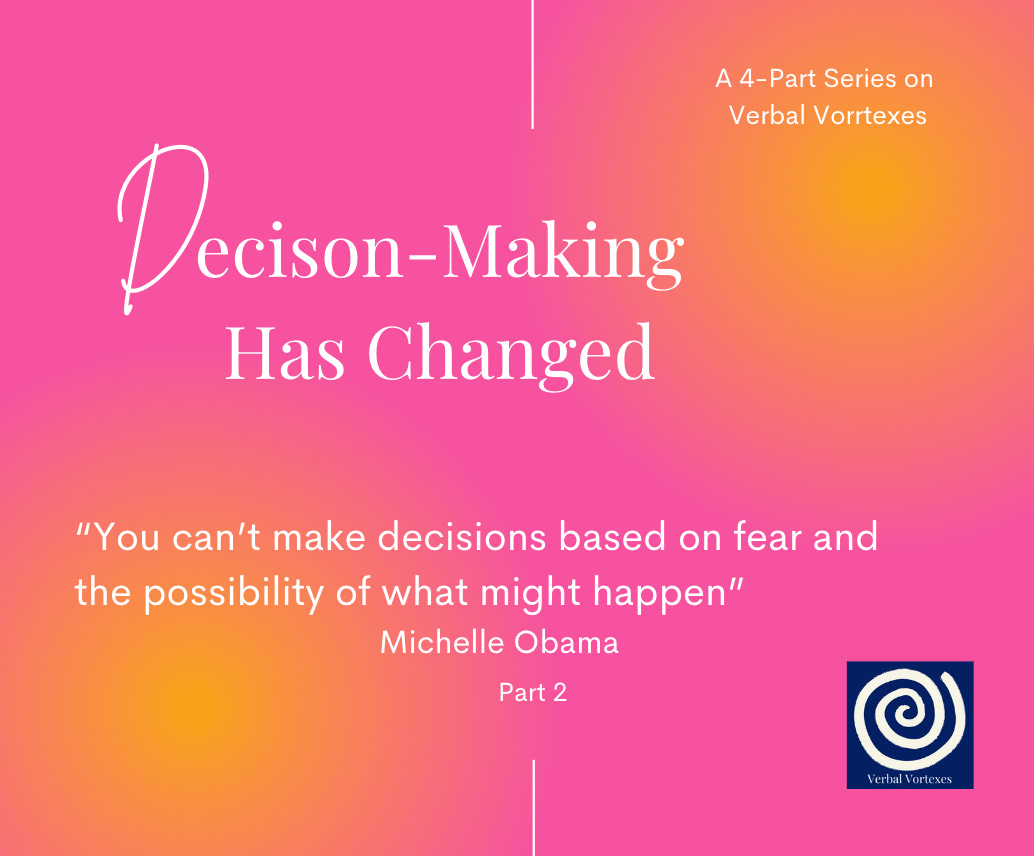Decision-Making Unmasked: A 4-Part Series on Navigating a Post-Pandemic Era-Part 2
Rewiring Mindsets, Restructuring Strategies, and Regenerating Leaders One Decision at a Time
This series is designed to spark your exploration of your current style of decision-making and ask if it is time to evolve it.
Here is Part 1 in case you missed it.
Part 2: Unveiling Personal Decision-Making Styles
In a world where change is the only constant, understanding your decision-making style is the first step towards making better choices. This awareness allows you to harness your strengths and address potential weaknesses, leading to more authentic and fulfilling outcomes.
PEOPLE ARE STRESSED
Stressed individuals may struggle to make sound decisions, and we all deserve to experience the best possible results from our choices. Let's dive into the diverse world of decision-making styles and uncover opportunities to level up our skills.
There are several personal decision-making styles, each with unique characteristics:
Analytical: This style relies on careful analysis, logic, and data-driven insights to make informed decisions.
Intuitive: Decision-makers following this style trust their gut feelings and instincts when choosing a course of action.
Collaborative: Individuals who favor this approach actively involve others and seek diverse perspectives before making decisions.
Directive: People with a directive style prefer to take charge, relying on their knowledge and experience to make firm decisions quickly.
Behavioral: This style considers the impact of decisions on people and relationships, prioritizing empathy and emotional intelligence.
Identifying your decision-making style requires honest self-reflection and observation of your thought processes:
Analyze past decisions: Reflect on how you approached choices, what factors influenced your decisions, and what patterns emerged.
Assess your values: Understand how personal values, goals, and experiences shape your decision-making style.
Seek feedback: Ask trusted colleagues, friends, or mentors for insights on your decision-making patterns and behaviors.
Recognizing your decision-making style equips you with invaluable knowledge about your strengths and weaknesses:
Harness strengths: Capitalize on the aspects of your style that lead to effective decision-making.
Address weaknesses: Identify areas where you might struggle and develop strategies to overcome those challenges.
Enhance adaptability: By understanding your style, you can adjust your approach to better suit different situations and contexts, improving your overall decision-making effectiveness.
Foster collaboration: Knowing your decision-making style enables you to communicate your thought process more clearly, facilitating better teamwork and collaboration with others who may have different styles.
Encourage personal growth: Recognizing your style allows you to identify areas for improvement and actively work on developing new skills or strategies to become a more well-rounded decision-maker.
Understanding your decision-making style not only equips you with valuable insights into your strengths and weaknesses but also paves the way for continuous growth and adaptability. Stay tuned for the next part of this series, where we delve into the role of cognitive biases in decision-making and how to overcome them
Part 3 Overcoming Decision-Making Challenges in the Post-Pandemic Era
In a world rife with uncertainty, improving your decision-making skills is crucial to navigate the complexities of the post-pandemic era. By understanding your decision-making style and adopting practical strategies, you can overcome challenges and make confident choices.
BECOME A DECISION-MAKING MAVERICK
As a decision-making maverick, you can tailor strategies that align with your strengths and mitigate potential weaknesses, leading to better outcomes and increased confidence.
To address the unique obstacles posed by the pandemic, consider the following strategies:
Embrace uncertainty: Cultivate a growth mindset and learn to accept ambiguity. Seek out diverse perspectives and stay adaptable to changing circumstances.
Manage stress: Practice self-care, set boundaries, and prioritize mental well-being. Implement relaxation techniques, such as meditation or mindfulness, to combat decision fatigue.
Foster collaboration: Leverage technology to facilitate virtual communication and build connections with remote colleagues. Encourage diverse perspectives and foster an inclusive environment for decision-making.
Develop emotional intelligence: Strengthen your ability to recognize and manage emotions in yourself and others. Integrate empathy into your decision-making process to better understand the impact on stakeholders.
In this article, we've explored:
The importance of decision-making in the post-pandemic landscape
Key components of the decision-making process
Challenges posed by the pandemic, such as remote collaboration and heightened stress
Strategies to overcome common obstacles, like uncertainty and decision fatigue
The significance of understanding and adapting your personal decision-making style
Armed with self-awareness and practical strategies, you can become a decision-making maverick and tackle the complexities of the post-pandemic era with confidence.
Stay tuned for the next part of this series, where we delve into the role of cognitive biases in decision-making and how to overcome them.
Those of You with a Taste for More
CLICK to register^^^^^
In this 5-week paid quest you are generously supported to reveal for yourself new ways to rewire, restructure, and regenerate the outcomes you have been wanting for a while but are not quite able to reach.
Here’s an outline of what you can expect to experience:
Week 1: Self-Awareness and Introspection
Participants explore their personal values, strengths, and weaknesses.
Activities include self-reflection exercises, journaling, and group discussions.
Week 2: Understanding Bias and Cognitive Distortions
Introduction to common cognitive biases and their impact on decision-making.
Participants learn techniques for identifying and overcoming these biases.
Week 3: Emotional Intelligence and Intuition
Focus on developing emotional self-awareness and understanding intuition.
Exercises include practicing mindfulness and learning to trust one's instincts.
Week 4: Holistic Decision-Making
Participants learn a step-by-step process for making more informed and balanced decisions.
This includes considering various factors, perspectives, and potential outcomes.
Week 5: Integration and Action Planning
Recap of key concepts and strategies learned throughout the challenge.
Participants create a personal action plan for implementing these strategies in their leadership roles.
Throughout the quest, you can engage in interactive activities, group discussions, and peer support to deepen your understanding and practice applying new skills.




